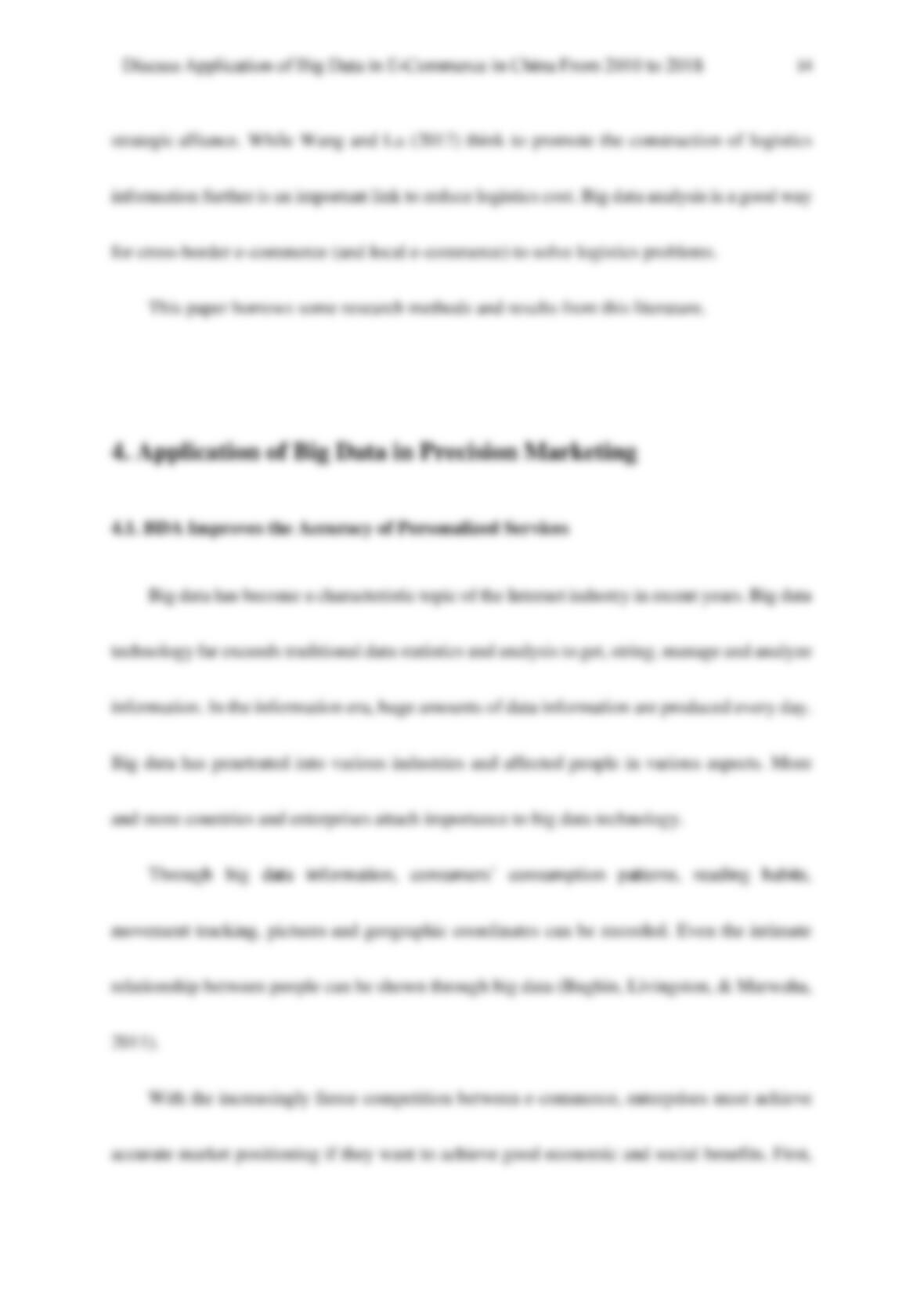1. Introduction
1.1. Research Background
Although scholars bring forward the concept of big data as early as 2001. But the real big
data application was officially developed in 2012 with the support of US President Barack
Obama. Big data has the characteristics of “3V”, namely Volume, Velocity and Variety. When
using Facebook, YouTube and other online services, each user will continuously and rapidly
generate new and diverse data in this huge database. Compared with the youth of big data, e-
commerce appeared earlier. As early as 1996, the revenue of Amazon online bookstore reached
15.8 million US dollars. By 1998, this figure had become 400 million US dollars. In China,
Tencent launched Paipai in 2003, Alibaba launched Taobao and Alipay, and more and more
Internet users began to accept online shopping. By 2010, as numerous traditional enterprises
and capital entered the e-commerce industry and the express industry developed rapidly, e-
commerce entered an era of rapid development.
The formation and stability of e-commerce market provide a foundation for the
application of big data in e-commerce. In recent two years, big data analysis has been widely
used in the field of e-commerce. “There has been an increasing emphasis on big data analysis
(BDA) in e-commerce in recent years.” Akter and Wamba (2016) remarked, “However, it
remains poorly-explored as a concept, which obstructs its theoretical and practical development”
(p.173). E-commerce has gained strong development momentum from the combination of big





































